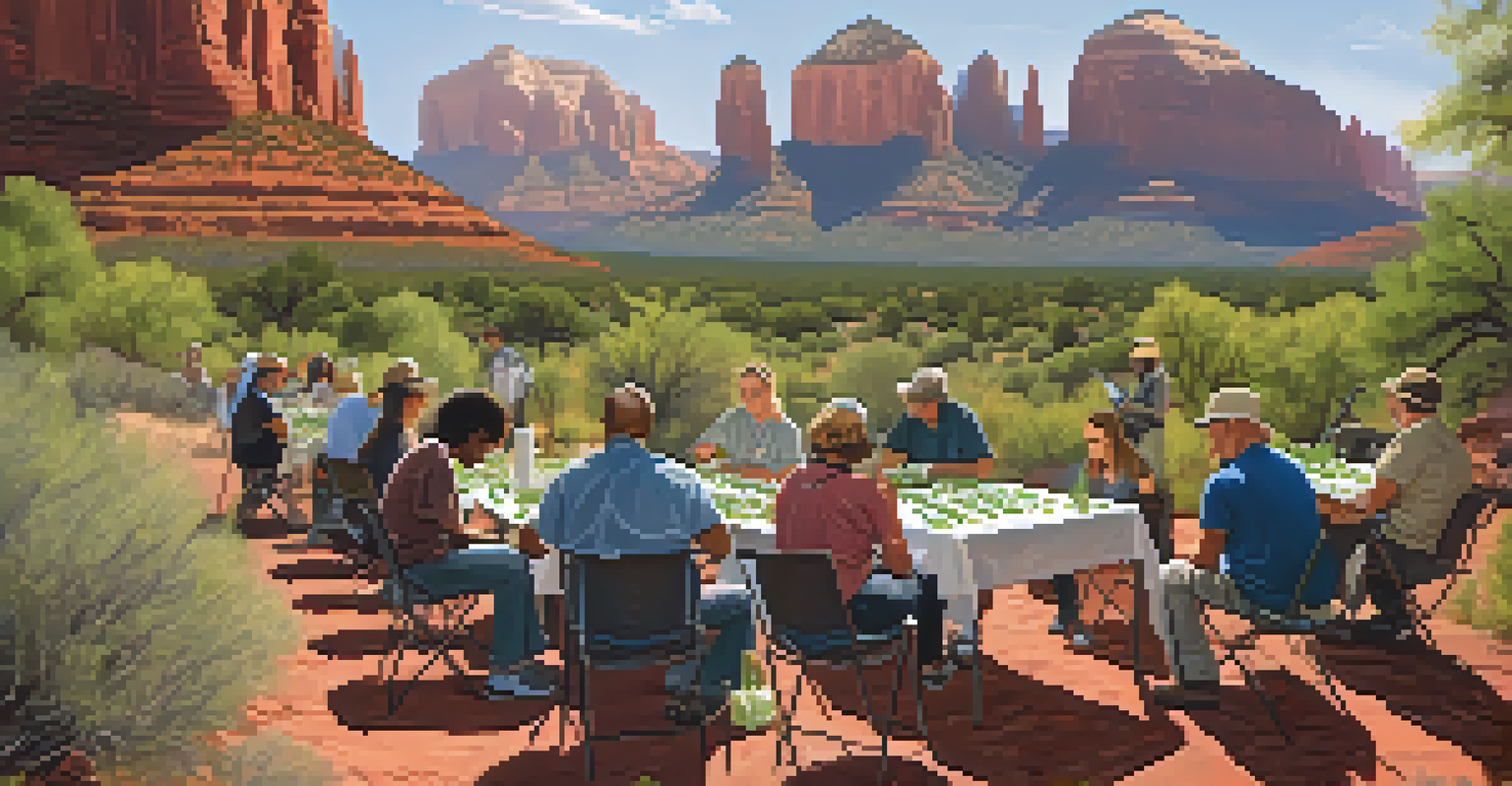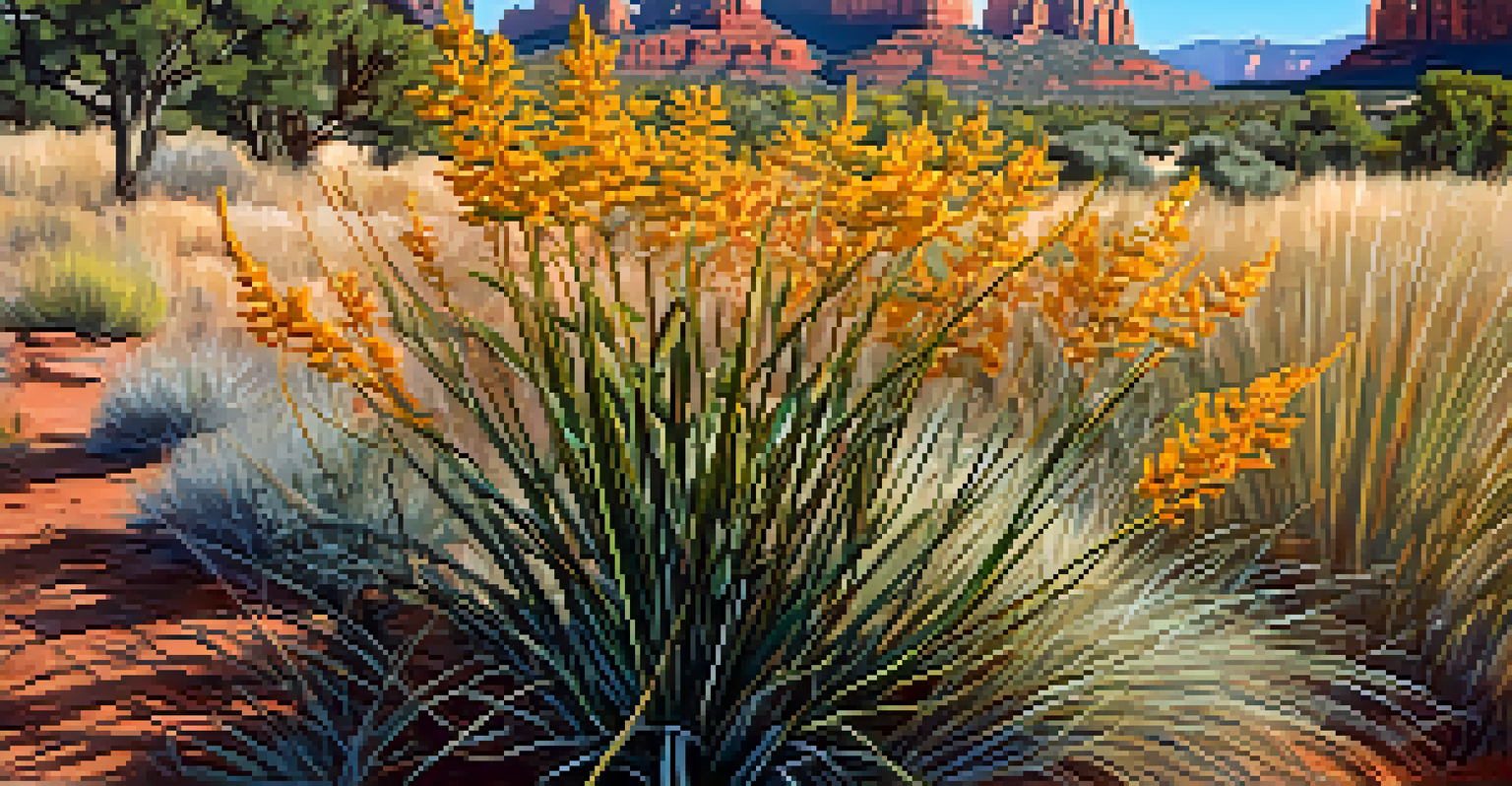Invasive Species Management in Sedona's Natural Areas

Understanding Invasive Species and Their Impact
Invasive species are plants, animals, or pathogens that are non-native to a specific area and can cause harm to the environment, economy, or human health. Sedona, with its stunning landscapes and diverse ecosystems, faces threats from various invasive species that disrupt local flora and fauna. For instance, species like the tamarisk can choke waterways, reducing biodiversity and altering habitats.
In nature, nothing exists alone.
The impact of invasive species extends beyond just the local wildlife; it can also affect tourism, which is a significant part of Sedona's economy. Visitors come to enjoy the natural beauty, but invasive species can degrade trails and scenic viewpoints, making them less attractive. Furthermore, they can introduce diseases that affect native species, leading to a decline in wildlife populations.
Understanding this impact is vital for the community, as it underscores the importance of managing these species effectively. It’s not just about preserving nature; it’s about protecting the very essence of what makes Sedona a beloved destination for so many.
Identifying Common Invasive Species in Sedona
Sedona is home to several invasive species, including cheatgrass, knapweed, and various non-native trees. Cheatgrass, for instance, is particularly notorious for altering fire regimes in the region, making wildfires more frequent and intense. This not only threatens the natural landscape but also poses risks to homes and infrastructure.

Knapweed, on the other hand, outcompetes native plants for resources, leading to a decline in local biodiversity. When native plants are pushed out, the entire ecosystem can suffer, affecting everything from soil health to animal populations that rely on these plants for food and shelter. Identifying these species is the first step in management and prevention.
Invasive Species Threaten Sedona
Invasive species disrupt local ecosystems, harm wildlife, and can negatively impact tourism in Sedona.
By familiarizing ourselves with these invaders, residents and visitors alike can contribute to their control. Simple actions, like reporting sightings or avoiding areas where these species thrive, can make a significant difference in combating their spread.
The Role of Community in Invasive Species Management
Community involvement is crucial in the fight against invasive species. Local volunteers can participate in organized clean-up efforts, removal projects, and education campaigns that raise awareness about the importance of protecting Sedona's natural areas. Events like 'Weed Days' encourage residents and tourists to come together for a common cause.
The greatest threat to our planet is the belief that someone else will save it.
Education plays a significant role in these community efforts. Workshops and informational sessions can teach people how to identify invasive species and what actions they can take to help mitigate their impact. The more informed the community is, the more effective the management strategies will be.
When the community rallies together, it fosters a sense of stewardship and responsibility toward the land. This collective effort not only enhances the effectiveness of management strategies but also creates a bond among residents, making Sedona's natural beauty a shared priority.
Strategies for Controlling Invasive Species
Effective invasive species management requires a combination of strategies, including physical removal, chemical treatments, and habitat restoration. Physical removal involves manually pulling out invasive plants or cutting down non-native trees, which can be labor-intensive but often yields immediate results. It's crucial to follow up on these actions to prevent regrowth.
Chemical treatments, while effective in some cases, must be used cautiously to avoid harming native species and the surrounding environment. Integrated pest management (IPM) combines various methods, using herbicides sparingly and in conjunction with other techniques. This holistic approach ensures that we're not just treating the symptoms but addressing the root causes.
Community Plays Key Role
Community involvement through education and volunteer efforts is essential for effective invasive species management.
Habitat restoration is also vital after invasive species have been removed. This can involve replanting native species to help restore the ecosystem and prevent invasive species from returning. By creating a balanced environment, Sedona can maintain its natural beauty and ecological health.
The Importance of Monitoring and Evaluation
Monitoring and evaluation are key components of invasive species management. Regular assessments can help track the effectiveness of removal efforts and determine if invasive species are reestablishing themselves. This ongoing observation is essential to adapt and refine management strategies as necessary.
Community scientists and volunteers can play a significant role in monitoring efforts. By collecting data on species populations and their impact on the environment, they provide invaluable insights that can inform future actions. Apps and online platforms can facilitate this data collection, making it accessible and engaging for everyone involved.
The information gathered through monitoring also aids in raising awareness about invasive species. Sharing findings with the community can spark further interest and encourage participation in management efforts, creating a cycle of engagement that benefits Sedona's natural areas.
Success Stories in Invasive Species Management
There are numerous success stories from around the world that demonstrate the effectiveness of invasive species management. For instance, in the nearby Coconino National Forest, community-led initiatives have successfully reduced the population of invasive weeds, allowing native plants to flourish once more. These efforts not only restore the ecosystem but also enhance recreational opportunities for visitors.
In Sedona itself, local organizations have launched programs that educate residents and visitors about the importance of invasive species management. These programs have seen increased participation and awareness, leading to tangible results in controlling invasive populations and revitalizing natural areas.
Monitoring Ensures Success
Regular monitoring helps assess management efforts and adapt strategies to combat the reestablishment of invasive species.
Such success stories serve as inspiration for further action. They show that with dedication and collaboration, communities can combat the threat of invasive species and protect their natural heritage for future generations.
How You Can Get Involved in the Effort
Getting involved in invasive species management is easier than you might think! Whether you’re a resident or just visiting, there are various ways to contribute. Joining local volunteer groups or participating in events focused on ecological preservation can make a significant impact. Many organizations also welcome donations to support their ongoing efforts.
Educating yourself and others about invasive species is another powerful way to help. Share information through social media, engage in conversations with friends, or even host a workshop in your community. The more people know about the issue, the more likely they are to take action.

Lastly, make conscious choices in your everyday life, such as avoiding the purchase of invasive plant species for landscaping. By being mindful of our choices and encouraging others to do the same, we can all play a role in preserving the beauty and ecological integrity of Sedona's natural areas.